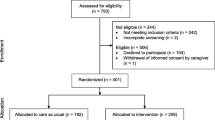Abstract
Background and aims: The purpose of this study is to describe predictors for discharge and one-year outcomes of acute-care hospital patients, 75 years of age or over, based on admission status information. We carried out a prospective study of a randomly selected patient population, from one urban acute-care hospital in each of the Nordic countries. 763 persons aged 75+ were randomly selected from acute admissions to the participating hospitals. 749 observations at discharge and 655 observations at one year were used in analyses. Methods: Data were collected with the MDS-AC 1.1 instrument within 24 hours of admission, and at day 7 or discharge, whichever came first. Outcome information was collected either by interviewing the patient or from patient records or registers. Discharge and one-year outcome (home, institution, death) were modeled by multinomial logistic regression, with admission status variables as predictors. Results: At discharge, 84% of subjects returned home, 11% went to an institution and 5.6% had died. At one year, 64% were still living at home, 24% had died, and 12% had moved to an institution. For discharge outcome, those having hospital admission due to a new problem or exacerbation of an old one had a higher risk of dying (OR 3.3) than returning home. Moderate to severe cognitive problems predicted death (OR 2.2) and institutionalization (OR 8.6) compared with discharge home. Problems in instrumental activities of daily living predicted death (OR 3.1) and institutionalization (OR 6.0). At one year, those with exacerbationof an old problem (OR 2.1) or with a new or exacerbated existing problem (OR 2.3) had a higher risk of dying than of institutionalization or discharge home. Having some cognitive problems (OR 2.8) or moderate to severe cognitive problems (OR 6.6) predicted institutionalization, but not dying or discharge home. Those with some problems in activities of daily living had a higher risk of both dying (OR 1.7) and of institutional care (OR 2.7). Those with moderate to severe problems in activities of daily living had also a higher risk of institutional care (OR 4.7) compared with those living at home. Conclusions: Evidence predictive of discharge and one-year outcomes in older acute hospital medical care patients seems to be visible from the beginning of the hospital stay. In order to increase the efficient use of health care services and quality of care, systematic standardized and streamlined assessment should be performed during the admission process.
Similar content being viewed by others
References
Stuck AE, Siu AL, Wieland GD, Adams J, Rubenstein LZ. Comprehensive geriatric assessment: a meta-analysis of controlled trials. Lancet 1993; 342: 1032–6.
Miller EA, Weissert WG. Predicting elderly people’s risk for nursing home placement, hospitalization, functional impairment, and mortality: a synthesis. Med Care Res Rev 2000; 57: 259–97.
Hyde JH, Robert HI, Sinclair AJ. The effects of supporting discharge from hospital to home in older people. Age Ageing 2000; 29: 271–9.
Campbell SE, Seymour DG, Primrose WR, for the ACMEplus project. A systematic literature review of factors affecting outcome in older medical patients admitted to hospital. Age Ageing 2004; 33: 110–5.
Carpenter GI, Teare GF, Steel K et al. A new assessment for elders admitted to acute care: reliability of the MDS-AC. Aging Clin Exp Res 2001; 13: 316–30.
Jonsson PV, Finne-Soveri H, Jensdottir AB et al. Co-morbidity and functional limitation in older patients underreported in medical records in Nordic Acute Care Hospitals when compared with the MDS-AC instrument. Age Ageing 2006; 35: 434–8.
Morris JN, Fries BE, Morris SA. Scaling ADLs within the MDS. J Gerontol Med Sci 1999; 54A: M546–53.
Morris JN, Fries BE, Mehr DR et al. MDS Cognitive Performance Scale. J Gerontol 1994; 49: M174–82.
Burrows AB, Morris JN, Simon SE, Hirdes JP, Phillips CD. Development of an MDS-based Depression Rating Scale for use in nursing homes. Age Ageing 2000; 29: 165–72.
see www.interrai.org
Hirdes JP, Fries BE, Morris JN et al. Integrated health information systems based on the RAI/MDS series of instruments. Health Manage Forum 1999; 12: 30–40.
Gray LC, Bernabei R, Berg K et al. Standardizing assessment of elderly people in acute care: The interRAI Acute Care Instrument. J Am Geriatr Soc 2008; 56: 536–41.
Author information
Authors and Affiliations
Corresponding author
Additional information
This paper was presented orally at the Nordic Congress of Gerontology, 28–31 May, 2006, Jyväskylä, Finland, and as a poster at the EUGMS scientific meeting, Geneva, August 23–26, 2006.
Rights and permissions
About this article
Cite this article
Jónsson, P.V., Noro, A., Finne-Soveri, H. et al. Admission profile is predictive of outcome in acute hospital care. Aging Clin Exp Res 20, 533–539 (2008). https://doi.org/10.1007/BF03324881
Received:
Accepted:
Published:
Issue Date:
DOI: https://doi.org/10.1007/BF03324881




